Gamarra is the largest clothing and textile market — if not the largest informal market — in Latin America. If you like to shop till you drop, Gamarra is a must-see for clothing aficionados. I recommend it as an off-the-beaten path activity you won’t find in other tourist guides.
Up to 40% of Latin American businesses are informal; they don’t report to the government or pay taxes. This percentage was declining as Peru’s government tackles informality, and it seemed every Gamarra vendor we patronize issues a formal receipt and even accepts Visa.
But the influx of hundreds of thousands of Venezuelans, many of whom work in Gamarra, has probably pushed the percentage of informality back up above 40%. So visiting Gamarra is a fun way to see the informal economy in action for economic nerds like me.
Located in the La Victoria district, Gamarra’s 20,000 textile shops, manufacturers, contractors and retailers employ over 100,000 people. The Gamarra economy is estimated at over $1.4 billion a year. Taking up 24 square blocks, the area receives an estimated 100,000 visitors a day. Most of them visit during the weekends. If you don’t like crowds, skip Gamarra altogether.
At Gamarra you can find everything: t-shirts, jean, socks and underwear, lingerie, maternity dresses, suits, tuxedos and bridal dresses, shoes, accessories, sports jerseys, hats, traditional Peruvian fabrics like alpaca, imitation replicas of designer brands and more. Seeing all of Gamarra would take weeks. The prices are low, and be prepared to haggle. Being a foreigner, you’ll be quoted higher prices than normal.
There are high-quality clothes in Gamarra. But the problem is that, with 20,000 vendors, finding one is like searching for a needle in a haystack. My recommendation is to avoid the guys who will swarm you in the street with flyers, business cards and coupons to their specific stores. The quality vendors don’t send people into the street.
You’ll see various independent designers in my photos below. You just have to explore, but some interesting ones I’ve found were and Affliction style of men’s t-shirts but feature, instead of skulls, images of the Peruvian indigenous kings and gods. Above is a surf-culture designer similar to Ripcurl or Quiksilver.
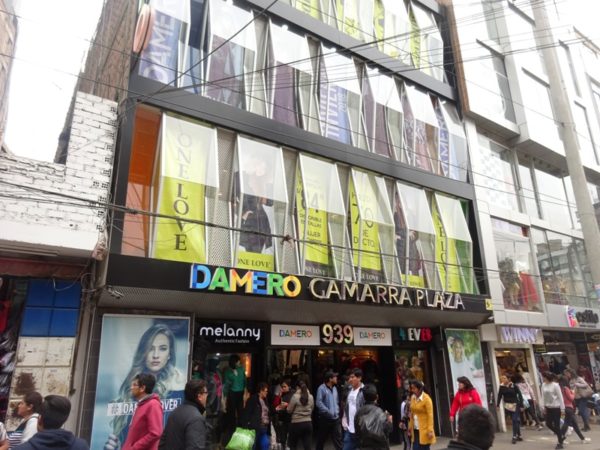
Ladies, this is my wife’s favorite shopping gallery. Damero Gamarra Plaza is one of the nicer spaces and it houses some of the best Peruvian designers in Gamarra. Damero is located at Jiron Gamarra 939.
My wife likes one designer in particular who makes jeans which aren’t made of denim. So not really jeans, but they look like jeans and are as comfortable as tight sweat pants.
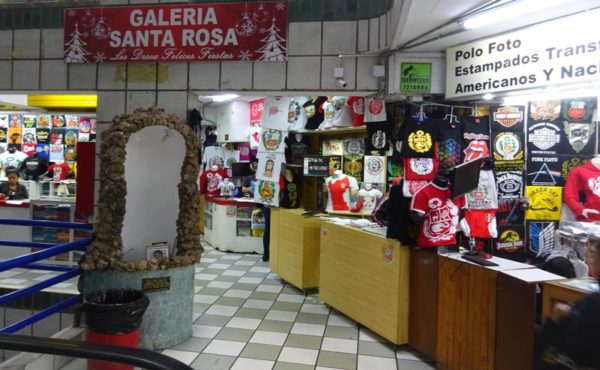
My favorite in Gamarra is the Santa Rosa Gallery, whose vendors specialize in Peruvian-branded clothes and custom t-shirts. One hot item of late is the national coat of arms, but they have all kinds of concepts from Elliot Tupac lettering, Nazca lines, Machu Picchu and more.

Above is a small selection from Baltica, my preferred vendor. They are all good, but the Baltica-produced t-shirts are soft and durable, and they always have XXL options. You can get touristic t-shirts in Miraflores or Barranco, but here you can get two or three for the price. And the tourist shops almost never have XXL, much less something I would like. So this is the best place to stock up.
The clincher, especially for my fellow XXL customers, is that Baltica and most of their neighbors can custom-make a t-shirt. You just pick the design you want and the t-shirt, and they’ll print it in five or 10 minutes.
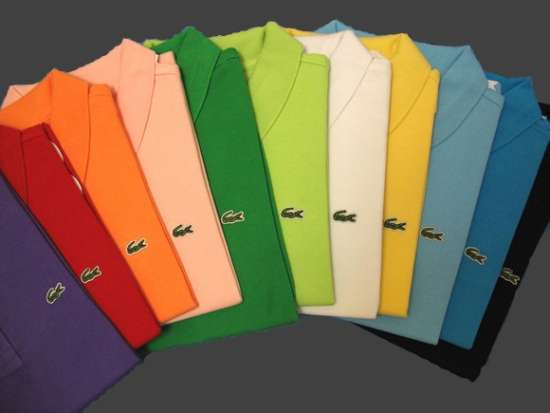
Gamarra is flooded with what Peruvians call “replicas,” or what we would call “counterfeits.” I know a guy who gets XXL Hugo Boss replicas which don’t shrink, but he is a rare exception to the rule. And that rule is the counterfeit quality is really bad.
I’ve bought a few Lacoste rip-offs that, after one time in the wash, shrunk to the point of being unwearable. Or a bold blue will fade to “sky blue.” If you need something to wear for one night, maybe that’s fine. But if it’s an international brand, it will probably break down within a year. You get what you pay for.
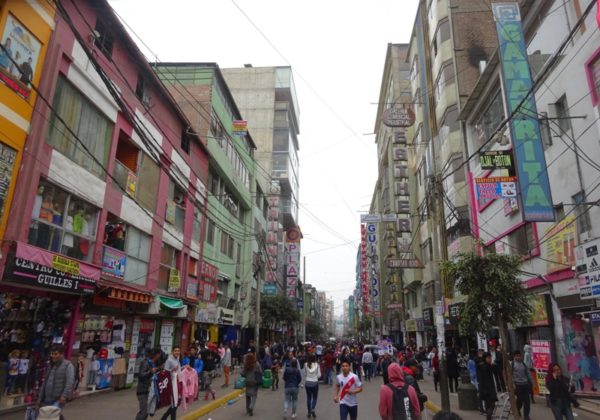
Remember that Gamarra is located in La Victoria, one of Lima’s most notorious areas for crime. So while it’s cheap, people who shop at Gamarra are Lima’s lower classes. If you only like luxury clothes, never a bargain hunger, then Gamarra’s not for you.
And with that comes crime. I’ve never had a problem in Gamarra, but occasionally there is trouble. Pickpockets aside, violence is generally limited to skirmishes between security personnel and informal retailers or extortion gangs. But it’s worth saying that visiting Gamarra is not on the beaten path for a reason.
History
Skip the history and jump to Map or Pictures.
The textile industry in Lima’s La Victoria district began in 1889 with the opening of Fabrica de Tejidos Santa Catalina (Santa Catalina Textiles Factory), the first of many textile factories opened by mostly Italian immigrants.
During the economic and social unrest of the 1930s, Peruvian military officer Luis Miguel Sanchez Cerro took power in a coup d’etat against business-friendly dictator Augusto Leguia. Sanchez Cerro, who was assassinated two years after taking office, and his successor General Oscar Benavides took steps to placate the working classes.
More than 4,000 housing units were built in La Victoria. The policy was ended in 1939 under Manuel Prado, but La Victoria had already become a workers’ district. In the 1940s factories continued to open, including the famous La Parcela (The Plot) and Mercado Mayorista y Minorista de Lima (Lima Wholesale and Retail Market).
Economic policy which consistently favored Lima and exports through the port of Callao caused a sustained, massive migration of peasants from rural areas of Peru to Lima. The sheer quantity of traders passing through the district inspired the nickname, “La Parada” (the Parade). Cerro San Cosme, one of Lima’s oldest shantytowns (the hillside slums visible to the east of Gamarra), was settled by these rural immigrants to Lima. The Gamarra tradition is a story of immigrants new to Lima. There were notable entrepreneurs hailing from Italian, Arab, Jewish, and Chinese backgrounds, in addition to those from the rural provinces. The district spawned famous stores like Monterrey, Tia, and Lau Chun.
By the 1960s, Gamarra established its reputation for clothing and textiles but zoning laws limited the number of formal, legal businesses that could be opened. So illegal businesses proliferated, some with no more than a door to the street. In 1972, the city changed the zoning laws, allowing many already established businesses to formalize their operations.
But legally registering the huge number of informal businesses in Gamarra remains a challenge for the city of Lima as well as the national government of Peru. For now, Gamarra is still the largest informal market in the Americas.
Independent manufacturers with lower production costs supply big businesses. Street vendors buy in La Gamarra to sell throughout greater Lima. Retailers sell directly to consumers. Much of Gamarra’s production is exported to North America and Europe. The scale of textile commerce is unbelievable.
Location and info
Gamarra (official website)
Gamarra on Facebook
Gamarra spans an entire neighborhood around Gamarra Street in the La Victoria district south of the historic city center, immediately west of Aviacion Avenue, the Gamarra Metro station and three blocks south of Grau Avenue.
In the interactive map above, Gamarra Street is marked purple and is the longest street in the district. It’s also where most of what you’re probably looking for can be found. Bazo Street, in green, is also home to many stores you may like.
Going further west past Huanuco Street, where the area is shaded in light blue, you’ll find more raw fabric and bottom-of-the-barrel prices (and quality). I recommend sticking to within one block of Gamarra Street (Jiron Gamarra). Use the icons to locate food, currency exchange, taxis and even hotels (don’t stay overnight).
Pictures
Click the pictures below to enlarge. For slideshow viewing, see the Gamarra album on the Lima City of Kings Facebook page.
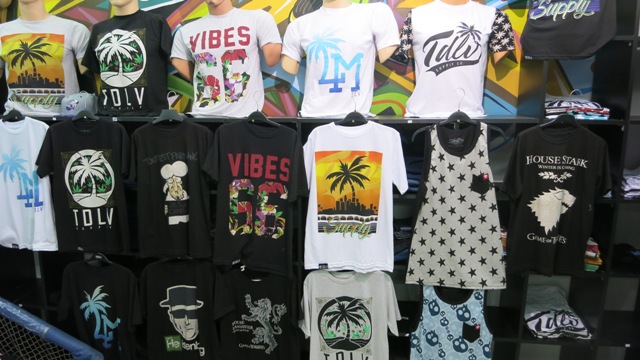
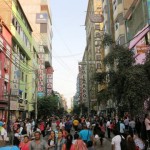
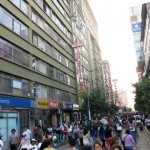
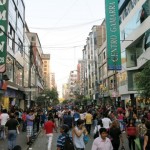
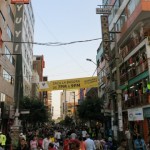
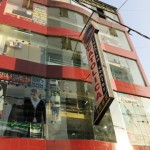
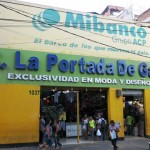
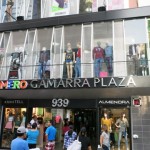
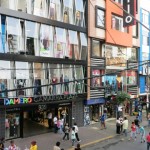

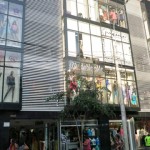
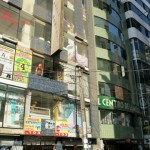
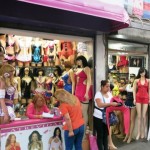
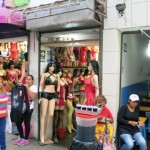
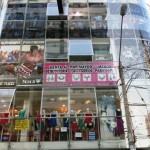

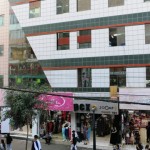

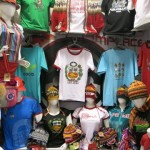
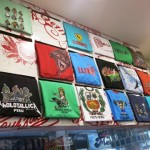

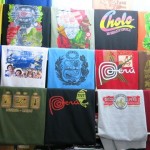
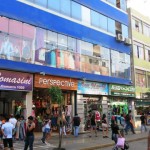
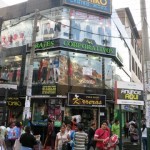
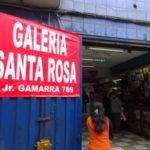
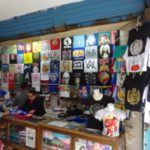

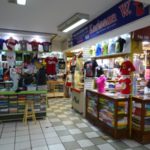
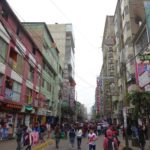
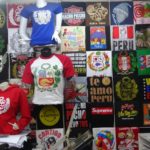

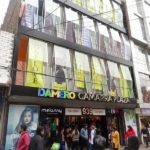
Gostaria de saber como faço para comprar diretamente da fábrica no peru
Dear Sir
We are export ladies gaments and handi crafts jewelry I looking for business partner
WhatsApp number
+918512879548
Thank you please
What exactly are you looking for from a business partner?
Are there fabric shops in the area? I’m looking for fabrics to get suits made.
Hola, me interesan algunos de vuestros productos, tienen website para comprar online y enviara Australia, tallas bien grandes.
Being interested to buy your apparels, contacts us with details of your products at email: amiablehorizontal@gmail.com OR Whats App +2348117378049
Henry Okoro
Director
Hello Everyone,
I am Sohel from Dhaka,Bangladesh. I work here at a Garments factory as a Merchandiser. Nice to meet you all.
soheljune@gmail.com
Hola
Soy Thea de China, trabajo en una tela fabric, por ropa de deporte, si desea ver más tela de poliéster o tela reciclada, tela polar, etc., contácteme
Wechat: li273211724
Whatsapp: 0086 15959150714
We are looking for small business in Gamarra ( or in other part of Peru)who can make sweat shirts and sweat pants ( we provide fabric ) Contact via Facebook to : Olga Neemann P.S.thank you for great post! Very informative